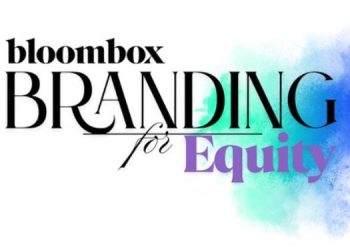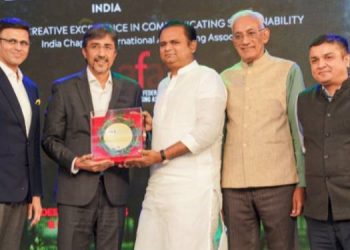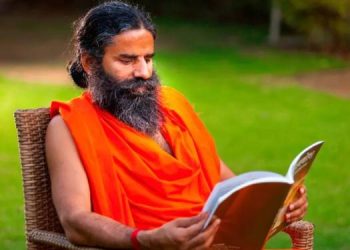MUMBAI: Sports competitions gain reach through a vast and engaged audience, while media houses benefit from a high-impact addition to their programming mix. For brands, advertising within the context of games offers an ideal platform to connect with customers, while fans – the engine power of the industry, are provided with avenues to understand, appreciate, and engage
with sports and related content on a deeper level.
Over the years, advertising expenditure in this sector has followed a consistent upward trajectory, signifying the increasing prominence of sports in society – especially in the post-franchising era. However, 2024 presented a challenge, as growth turned out to be more elusive than anticipated. The advertising investments for the year highlight the need for a closer analysis of the factors that were at play. This is one of the observations of GroupM Sporting Nation’s 12th Edition.
Media expenses recorded a figure of Rs. 7989 Crores ($ 951 Million) in 2024, closing in on the billion-dollar mark, with an increment of 7% over the previous year. Television has traditionally been the cornerstone of the interface between sports and media, and it continues to be the largest contributor here. TV ads on sports clocked total spends of Rs. 4396 Crores ($ 523 Million) last year, though growth momentum was affected by industry-specific headwinds. Recent years have seen a huge growth spurt for digital advertising in sports.
At the heart of this trend are the rapid developments in the OTT (Over-The-Top) space with platforms like Hotstar, Jio Cinema and Sony Liv ruling the roost. The Indian consumer has adapted well to technology, as is evident in the healthy rate of migration to digital portals for various content segments – sports, entertainment, and others. In 2024, advertising on digital sports networks showed a robust growth of 25% over 2023, the total value amounting to Rs. 3588 Crores ($ 427 Million).
As the media terrain evolves, brands look at multi-pronged approaches for consumer activation. Sports is, today, a significant part of the marketing mix for many of these businesses. The presence of marquee competitions in the annual calendar, and their respective scales, play a major role in the way brands spread out their yearly spend plan.
Cricket dominated: Cricket’s share of total advertising expenses was a staggering 94%, unquestionably dominating the spend pattern. Each match played by the Indian cricket team is invaluable to the industry, acting as the hub around which numerous commercial spokes revolve.
However, the scheduling vagaries of the sport have led to a relatively lighter international calendar in 2024 for Team India, with only 44 games across Tests, ODIs, and T20Is – a clear decrease! When we factor in additional elements, and weigh these numbers in context, 2024 emerges as even more challenging. While the ICC T20 World Cup was a premier event, the year came on the heels of the rather phenomenal 2023, driven by the ODI World Cup which had an outlier-like impact on advertising costs. Additionally, if we consider the effect of us having played hosts for that event, it further elevates the hurdle rate for commercial performance in 2024. Despite these impediments, the 22-yard game saw a 6% year-on-year growth in advertising spends.
With a quieter cricket calendar, brands that show a proclivity for leveraging the reach and influence of sports, for marketing, tend to shift their outlay to other disciplines, in international and domestic competitions, including club and franchise events.
The Paris Olympics, a sporting highlight of 2024, provided such organisations with an excellent opportunity to rally around the collective cause of the nation, while engaging with supporters. This fragmentation of ad budgets outside of cricket, led by this quadrennial spectacle in the French capital, bodes well for the rise of a multi-sport nation. However, the viewership and engagement levels of non-cricketing sports are still commensurate with the early stages of development they are in, and they do not yet support advertising rates akin to those of the prime-time blockbuster that the No. 1 sport is.
This gap will take time to close, resulting in a lag in media costs and a concomitant disparity between the volume and value shares of marketing spends for Emerging Sports across TV and OTT platforms. While we saw a growth of 14% over 2023 in ad spends related to these sports, the media presence of these competitions still has a long way to go on the path to maturity. When cricket inventory in traditional and modern media is lower than usual, brands tend to
look beyond sports, exploring other channels and platforms, until the balance between supply and demand is better aligned.
Changes In Sports Media: Sports media has seen major changes of late. If look at 2023 through the rear-view mirror, one of the most notable shifts that happened then was the separation of television and digital rights for the IPL. While Disney Star continued to dominate traditional TV, the OTT rights were secured by Viacom, opening the doors of the T20 spectacle for Jio Cinema. Such moves are driven by evolving consumer habits and the long-term growth potential seen in the digital space.
As we drive ahead to 2024, we get to witness the much-discussed merger of these two giants, resulting in the creation of JioStar, a consolidated powerhouse. This merger represents a seismic shift, signalling a new era in broadcasting.
Although the process was completed only in November, both organisations had a view of the imminent unification, and quite possibly, the roadmap for future growth was already in the works. JioStar now stands poised to play a critical role in the live streaming of cricket’s three major pillars – ICC tournaments, BCCI’s bilateral events, and the IPL.
The collaborations with the rights holders in India’s most popular sport show great promise for the future of the industry. The current media rights cycles are still in their early days – for all three, and we are witnessing a dynamic environment. Looking ahead, the international governing body for cricket has the 2025 Champions Trophy in its calendar, followed by a defence of the World T20 title and another strong shot at the 50-over World Cup in the subsequent years – all under the current cycle that runs till 2027. Meanwhile, BCCI’s line-up remains thrilling, and the IPL is expected to steal the spotlight in conversations in the months of April and May. With these exciting developments on the horizon, we can expect the media-sports partnership to thrive, giving a shot in the arm for the industry in the near term.
Marked improvement in the quality of live sports coverage in Indian media: Recent years have seen a marked improvement in the quality of live sports coverage in Indian media. Market leaders have significantly raised the bar, providing fans with crystal-clear streaming, immersive visuals, expert analysis, and other innovation-fuelled experiences.
These enhancements in the quality of live sports coverage are setting new standards for fan engagement. With the merger of the two media giants, we can expect these trends to go on the overdrive in the coming years, offering even greater value to sports fans. The combined technical expertise of these entities will play a crucial role in further elevating the viewing experience for sports lovers. This consolidation brings with it, among other factors, the possibility of an increased focus on regional content.
With investments expected in multilingual streaming, this will ensure that sports events are accessible to a broader and more diverse audience across India, promoting nationwide consumption of content. Advertisers, too, could play their cards well and benefit from potential single-point tie-ups covering both TV and digital schedules. At the same time, we can expect competitive responses from other media players too, which could lead to even more innovation in sports broadcasting. Cricket will continue to dominate in terms of advertising revenue, but it is vital that media networks cross-fertilise those benefits to nurture emerging sports, highlighting India’s multi-sport legacy.
Though the 2024 leg was raced on a tough track with fewer opportunities to accelerate, the upcoming circuits promise to be more friendly. The sporting ecosystem will be charged up and firing on all cylinders. With easier access to high-speed internet, encouraging trends in penetration and usage patterns of smartphones, and increasing share and adoption of connected televisions (CTVs), the macro indicators seem favourable, and we are all set to clock impressive lap timings in 2025 and beyond.

















